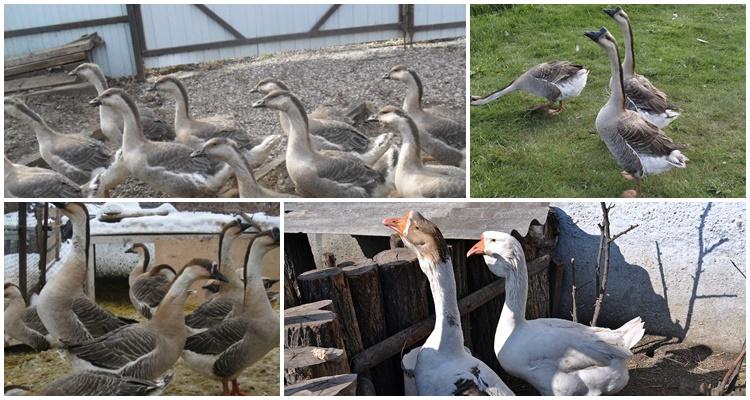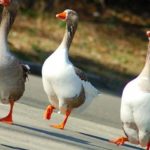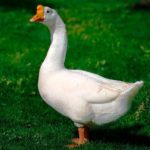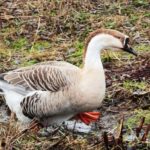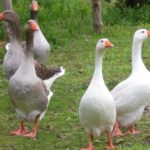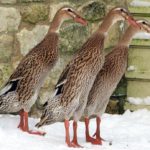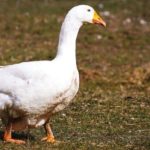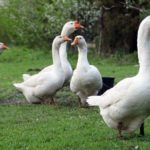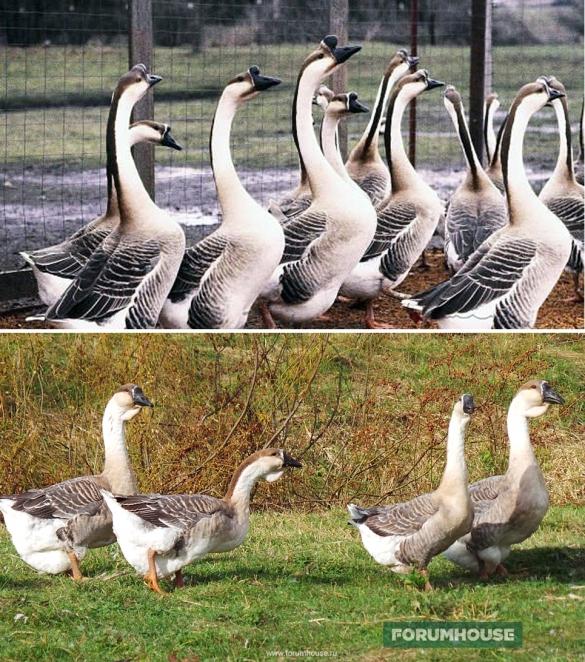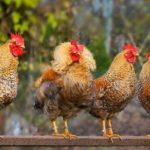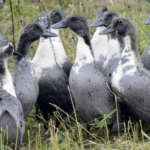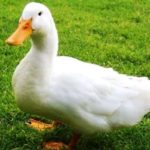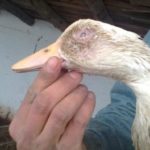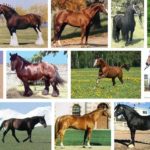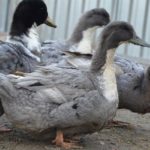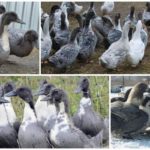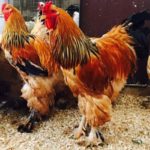To successfully breed ducks at home, it is important to choose the right breed. Ducks are most often kept to produce tasty meat, but some farms specialize in keeping egg-bearing or fur-bearing breeds. The egg production of ducks differs from that of laying hens, so it is recommended to select ducks for eggs especially carefully.
Kinds
Types of ducks for home or farm breeding are divided into 3 main groups:
| View | Description |
| Oviparous | They show an increased tendency to lay eggs and provide incubation of offspring. |
| Meat | They quickly gain weight and muscle mass, reaching a weight of at least 4.5 kilograms before slaughter. |
| Meat and egg | Versatile birds that show high egg production with the ability to build muscle mass. |
A classic example of a species intended to be bred for meat is the American mute mute. These are Muscovy ducks or Indo ducks, which look like Peking ducks, the difference between them is in the description of the colors of the feathers. The species is named mute for its distinctive feature - hissing at its relatives.
A special group consists of decorative breeds that are not highly productive. They need walking in water bodies, are not picky about food and living conditions, and are frost-resistant.
Egg breeds of ducks
Egg-laying ducks are focused on an increased rate of egg laying. These are low-fat layers that differ from their relatives in appearance. Small birds begin to lay eggs relatively late, after reaching the age of 6 months. Over the course of several weeks, they actively increase the rate of laying and maintain stable indicators for a long time.
For home rearing in order to obtain eggs, Dutch and Spanish ducks are purchased, as well as a breed called the Indian runner. The clutch of such ducks reaches 360 pieces annually. A special feature of the runner is the formation of a cylindrically elongated body. Runners most often move around the territory quickly, in small groups.
Runners have a calm character, do not get into fights, and get along with other relatives. Birds can be white, black or grey.
Coloring depends on the parental line. To date runners are considered the most egg-laying ducks. The runner cannot be confused with other species due to its special elongated body and small size. Female runners exhibit a unique ability to care for their offspring for a long time.
Common egg species:
- Favorite. The artificially bred breed produces up to 250 eggs annually. The meat is characterized as medium fatty and juicy. Birds must be provided with open range. They can do without bodies of water and be kept in cages. Favorites have good immunity.
- Moscow white. Laying hens produce 130 eggs, but the specimens weigh 100 grams each, which is higher than generally accepted norms. In 2 months, ducklings are able to gain 2 kilograms of weight. This ability is valued when raised for slaughter, when short deadlines are set.
- Ukrainian gray. A beautiful, artificially bred duck intended for breeding for the purpose of producing eggs. The downside of the species is the need for walking on a pond.
- Agidel. Broilers related to meat, but at the same time capable of producing 250 eggs annually. They have good immunity, quickly adapt to new conditions, and exhibit high frost resistance.
Information! Keeping egg-bearing breeds requires the creation of special conditions. Such birds need good walking, as well as the creation of a comfortable nest for hatching.
Combined varieties
In a small household, ducks that combine various qualities are considered advantageous to keep. Such individuals are called meat-egging. They produce a lot of eggs, but are also able to quickly build muscle mass. The meat of such ducks is characterized by high fat content and has high taste qualities.
Meat-egg types:
- Cayuga. Ducks of this breed are distinguished by unusual external characteristics.Feathers of a dark green and black hue after plucking leave dark spots on the carcass, but the taste of the meat does not suffer from this. Cayuga can be kept in a small space, they do well without bodies of water, are prone to long incubation, and take care of their chicks. A special feature of the Cayuga is the production of black eggs, for this reason many owners refuse them.
- Pace. An unpretentious species that does not require special care and does not require a reservoir. The weight of an adult carcass reaches 3.5 kilograms. Every year the bird lays up to 120 eggs.
- Saxons. These are medium-heavy ducks, the meat of which is in demand due to its delicate taste. The breed is distinguished by a calm disposition and a tendency to quickly gain weight. At the same time, ducks show high egg production rates; they are capable of producing up to 200 eggs annually.
- Khaki-Campbell. Ducks lay up to 300 eggs annually, and quickly gain weight. These are very calm birds that get along with any other ducks. The downside of the species is the inability to hatch offspring, so it is recommended to purchase the breed only to obtain tasty dietary meat. When raised, birds need constant walking in open areas and swimming in ponds.
Reference! When purchasing combined breeds, you must pay attention to the requirements. For full growth and development, many birds need walking on ponds.
Meat direction
Meat birds are considered the most popular, they are fertile, they have a developed immune system, which protects owners from unnecessary worries. Fillet obtained from meat birds is distinguished by its juiciness and richness of taste.
A feature of meat types is the ability to quickly gain weight.The fastest growing breed purchased for slaughter is the Bashkir breed. Large, broad-chested duck gives after slaughter 70 percent pure meat. The disadvantage of the Bashkir duck is the mandatory requirement for a pond when keeping it at home.
Meat types include:
- Black white breasted. A breed bred on the territory of Ukraine. In adulthood, the weight of the carcass reaches 4 kilograms. Moreover, the weight of clean meat after processing reaches 65 percent of the total mass.
- Musk. Birds quickly gain weight; a special feature is the special aroma of the meat. An adult bird reaches a weight of 6 kilograms. Muscovy duck fillets are classified as dietary products.
- Beijing. Delicacy meat is purchased for restaurants, and a traditional dish called “Peking duck” is prepared from it. Rearing is due to the fact that Pekin cats are very noisy and require a lot of food. The yield of meat after slaughter reaches 80 percent.
- Cherry Valley. A new breed with high productivity, which is a cross of the Peking duck. The duck was bred specifically to produce tender dietary meat.
- Mulards. White birds with black spots that weigh about 7 kilograms as adults. These are hybrids created on the basis of the Peking gene. Mulards are called “birds of one season.” They are widely raised for slaughter. Mulards gain weight even when the basis of their food is grass. With a good egg production rate, these birds are classified as meat animals due to their ability to actively gain weight and produce tasty dietary meat.
Reference! The meat of some ducks tastes like game, which is actively used in the restaurant business.
Decorative birds
Thoroughbred ducks are distinguished by their attractive appearance; they decorate artificially created reservoirs and are often bred on the territory of hotel complexes intended for country holidays. A special feature is their unpretentiousness in care, as well as the inability to lay eggs consistently or gain weight.
| Decorative types | Description |
| Crested | Birds that walk upright with well-developed muscles need bodies of water and spend a lot of time on the water. |
| Mandarin ducks | Small Chinese birds. Unlike Russian ducks, they feed on frogs and small fish. |
| Caroline | Attractive bright birds, distinguished by an unusually shaped tail. A pond is required for breeding. |
| Ogar | Birds with red-brown plumage and black beaks. The breed quickly adapts to the conditions of detention and does not show increased demands. |
Reference! Russian corydalis have a peculiarity. The larger the size of the tuft on the head, the less productive the duck is. This quality is taken into account when purchasing corydalis for ornamental breeding.
What colors are there?
The plumage of breeds intended for home breeding is usually evenly colored and kept in calm, neutral shades. You can often see smooth transitions on the body. The color scheme is dominated by white, gray, yellow, and dark brown. The Russian breed of ducks with snow-white plumage is called the white-nosed duck.
Indo-ducks are breeds of classic wild ducks, as they are presented on the pages of reference books or textbooks. The body is painted dark gray, the tail is thinned with dark, almost black feathers. A bright green iridescent stripe runs along the circumference of the neck.
Criterias of choice
To select a bird breed, you need to analyze the input parameters. The purpose of ducks dictates the basic requirements:
- maintenance for the purpose of obtaining meat and eggs;
- obtaining fluff from birds;
- home breeding of decorative breeds.
To obtain meat and eggs, breeds of universal use are chosen. But if increased laying speed is expected from ducks, then it is better to choose a species called the Indian runner. Laying hens of this breed can amaze owners with the speed of egg supply.
To raise birds for slaughter, it is recommended to look closely at birds that quickly gain weight. The meat of such birds is characterized by high fat content.
Decorative growing requires the presence of a pond and giving the bird freedom of movement. Individuals of decorative breeds are not burdened with brooding, do not need additional feeding, and obtain food themselves throughout the warm season.
Before purchasing, all birds must be inspected based on the checklist:
- there are no damages, cracks or punctures on the beak;
- the tail is feathered with dense, intact feathers;
- paws have no visible damage;
- The bird stands well on its feet and moves quickly.
For rearing from scratch, ducklings are purchased at the age of several weeks. Ornamental species are acquired at the stage when the bird has already fledged.

